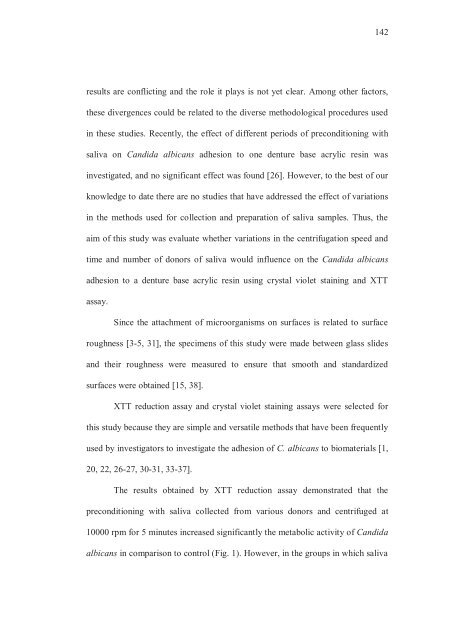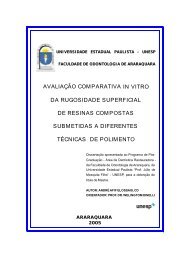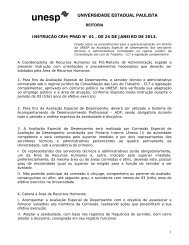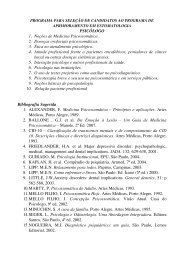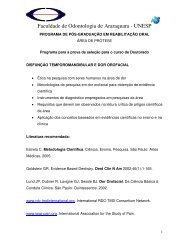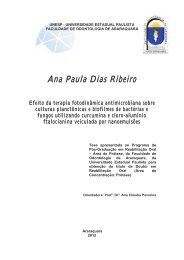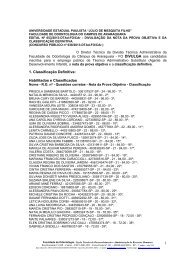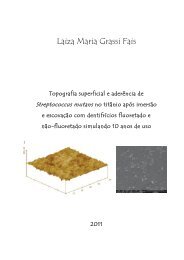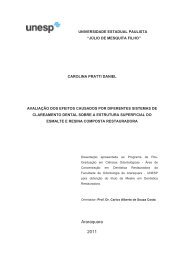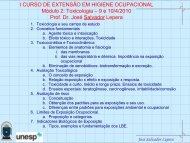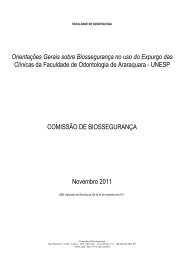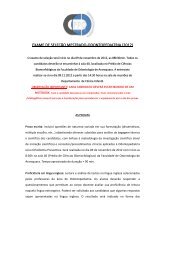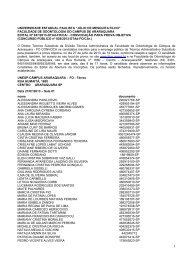universidade de são paulo - Faculdade de Odontologia - Unesp
universidade de são paulo - Faculdade de Odontologia - Unesp
universidade de são paulo - Faculdade de Odontologia - Unesp
Create successful ePaper yourself
Turn your PDF publications into a flip-book with our unique Google optimized e-Paper software.
142<br />
results are conflicting and the role it plays is not yet clear. Among other factors,<br />
these divergences could be related to the diverse methodological procedures used<br />
in these studies. Recently, the effect of different periods of preconditioning with<br />
saliva on Candida albicans adhesion to one <strong>de</strong>nture base acrylic resin was<br />
investigated, and no significant effect was found [26]. However, to the best of our<br />
knowledge to date there are no studies that have addressed the effect of variations<br />
in the methods used for collection and preparation of saliva samples. Thus, the<br />
aim of this study was evaluate whether variations in the centrifugation speed and<br />
time and number of donors of saliva would influence on the Candida albicans<br />
adhesion to a <strong>de</strong>nture base acrylic resin using crystal violet staining and XTT<br />
assay.<br />
Since the attachment of microorganisms on surfaces is related to surface<br />
roughness [3-5, 31], the specimens of this study were ma<strong>de</strong> between glass sli<strong>de</strong>s<br />
and their roughness were measured to ensure that smooth and standardized<br />
surfaces were obtained [15, 38].<br />
XTT reduction assay and crystal violet staining assays were selected for<br />
this study because they are simple and versatile methods that have been frequently<br />
used by investigators to investigate the adhesion of C. albicans to biomaterials [1,<br />
20, 22, 26-27, 30-31, 33-37].<br />
The results obtained by XTT reduction assay <strong>de</strong>monstrated that the<br />
preconditioning with saliva collected from various donors and centrifuged at<br />
10000 rpm for 5 minutes increased significantly the metabolic activity of Candida<br />
albicans in comparison to control (Fig. 1). However, in the groups in which saliva


